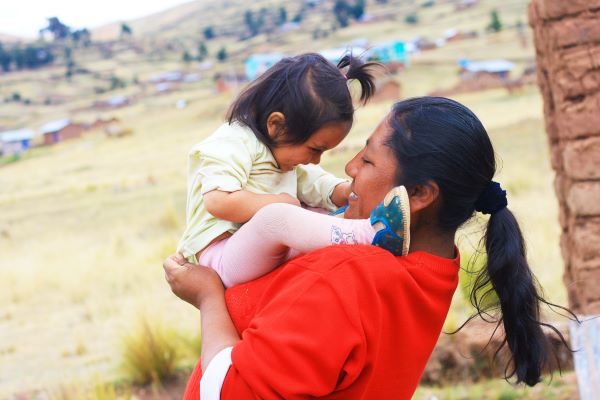Recommended
Content warning: this post contains discussion of pregnancy loss
In the wake of the turmoil created by the US Supreme Court’s recent overturning of Roe v. Wade, there’s been a lot of discussion about the health implications of abortion care. But often missing from this discussion is a recognition that reproductive rights are entwined with women’s economic empowerment. Pregnancy and motherhood are two of the most consequential factors associated with gender gaps in economic outcomes. In the quest for poverty eradication, resilience, and global prosperity, we cannot afford to forget that a world in which men and women have equal economic opportunities would be a world in which we can achieve our greatest productive potential.
This blog post highlights the intrinsic connection between pregnancy and economic wellbeing.
As the Development Alternatives with Women for a New Era (DAWN) network’s 1995 platform eloquently recognized, “women stand at the crossroads between production and reproduction, between economic activity and the care of human beings, and therefore between economic growth and human development.” Women are predominantly responsible for incubating and nurturing the next generation of human beings, who will shape our future global economy. Women also play a critical part in economic production through our own economic activities. There is ample anecdotal evidence that being pregnant and raising children impact women’s ability to engage in paid work, participate in economic decisions, and wield economic agency. Adding to that, researchers have used multiple econometric strategies (including event studies with longitudinal data and analyzing infertility as an exogenous shock) to establish that there is a causal “motherhood penalty” in countries across the globe. Taken together, pregnancy and child rearing shape women’s contributions to economic production and control over economic resources.
In public exchanges on abortion, I often see myself and other people with the capacity for pregnancy reduced to our roles as agents of reproduction. But we are multifaceted individuals whose significance in our economies and communities extends far beyond our childbearing function.
On a personal note, I am a miscarriage survivor and a mother—but I am also many other things.
My first pregnancy was traumatic. I was 33 years old and excited about the prospect of motherhood. The day before I was scheduled to have my 12-week ultrasound, I started cramping and spotting blood. Sensing that something might be going awry, I called the clinic to see if I could come in early. They were fully booked and told me to go to the emergency room. I did. After hours of waiting, I finally had an ultrasound. The attending physician said he saw a mass that looked like a six-week-old fetus, so I was either wrong about my dates or the fetus wasn’t developing normally. He sent me home to wait and see how things evolved over the coming days. He explained that I would either have a “spontaneous abortion” (i.e., a miscarriage) or the fetus would continue developing and I could schedule a 12-week ultrasound in another six weeks.
I knew that I wasn’t wrong about my dates. I went home bracing myself for a miscarriage.
That evening, I started bleeding more heavily. I saw a few big blood clots and figured it would be over. But the blood continued. And the clots grew larger, soaking through several sanitary pads in seconds. I gave up trying to stem the flow. I sat on the toilet and hemorrhaged there for hours, not wanting to return to the emergency room, only to be curtly dismissed for overreacting. The statistics played in my head—10 to 20 percent of known pregnancies end in miscarriages—so mine was a common occurrence. And yet, it seemed like all life was draining out of me. When the sun came up and I was still bleeding, I knew I had to consider going back to the emergency room. I had been told not to worry unless I felt dizzy or lightheaded. I wasn’t dizzy or lightheaded… until I stood up. And then the world started swirling around me.
By the time I arrived at the hospital, my pulse was racing. My obstetrician confirmed that I had experienced an incomplete miscarriage and was hemorrhaging dangerously. He performed a “surgical evacuation” (the same dilation and curettage procedure used for surgical abortion), to remove the remaining pregnancy tissue and control my bleeding. My condition stabilized and I slowly recovered.
My second pregnancy—a few months later—ended joyfully, with the birth of my son.
Had I not survived my pregnancies, I would not be here writing this. For far too many women, pregnancy and childbearing impede the prospect of pursuing an economically productive life.
And while it can be a phenomenal endeavor, pregnancy often kills. Globally, 152 pregnant people die for every 100,000 live births. This maternal mortality ratio (MMR) is systematically higher in some places and for some groups of people. For example, according to the most recent statistics from 2017, the MMR was 1150 in South Sudan compared to an average of 462 for low-income countries and 11 for high-income countries. Black people in America are three times more likely than non-Hispanic white people to die from pregnancy. Worldwide, over 800 people die each day from causes related to pregnancy—including severe bleeding, infections, high blood pressure, childbirth complications, and unsafe abortion. Pregnant people are also more vulnerable to intimate partner violence and experience higher rates of depression and suicide. Most of these deaths are preventable but are amplified by a tendency for care providers to dismiss the instincts of pregnant people who know their bodies, understand their circumstances, and can sense when something isn’t right. In resource-poor settings, limited access to quality care remains a driving force behind maternal mortality.
I would likely have bled to death, had I not had the wherewithal and opportunity to access medical attention. I am also privileged to have had a support system that enabled me to recover from my experience.
The same practices that saved my life have the potential to save numerous others. Access to surgical or medically induced abortion is a lifeline for millions of pregnant people worldwide. An estimated 257 million women would like to limit or delay childbearing but are not using modern contraceptives. Combined with the reality that contraceptives fail, an estimated 121 million unintended pregnancies occur each year (roughly half of all pregnancies). Up to 60 percent of these unintended pregnancies end in an induced abortion. The risks of complications from abortions managed by skilled providers are low, but 45 percent of induced abortions are not carried out by trained providers using methods recommended by the World Health Organization. Almost 95 percent of these unsafe abortions take place in developing countries. Unsafe abortions account for up to 13.2 percent of maternal deaths each year and 7 million people hospitalized for resulting complications. By these indications, promoting safe abortion care is crucial for women’s wellbeing.
Figure 1: Global statistics on reproductive health
Sources: UNFPA (United Nations Population Fund), 2022. “State of World Population 2022: Seeing the Unseen: The Case for Action in the Neglected Crisis of Unintended Pregnancy.” https://www.unfpa.org/swp2022. WHO (World Health Organization), 2020. “Preventing Unsafe Abortion: Key Facts.” https://www.who.int/news-room/fact-sheets/detail/abortion. Notes: maternal deaths are estimated with uncertainty intervals, which imply that true values could be higher than these reported.
What does this imply for policymakers and institutions interested in fostering economic development?
There are two clear imperatives, to promote women’s economic empowerment, policymakers should protect reproductive rights and holistically support childcare. Research reviews from CGD’s Third Annual Birdsall House Conference on Women and in the Handbook of Feminist Economics have documented that policies advancing reproductive rights improve women’s livelihoods in developing and developed economies, increasing women’s participation in the formal labor force by over 5 percent. In contrast to recent setbacks in the United States, the global trend towards improved access to safe abortion care is promising news on this front.
But it’s important to note that many women who choose motherhood will not receive adequate child-raising support. Realizing our collective economic potential calls for a comprehensive affirmation of reproductive justice (“the human right to maintain personal bodily autonomy, have children, not have children, and parent the children we have in safe and sustainable communities”).
The gender equality team at CGD has been actively engaged in moving the needle on care. We recently convened a technical workshop on global childcare with the World Bank’s Early Learning Partnership, and I’ve got a new working paper coming out soon that analyzes the effects of a community-based childcare intervention in Burkina Faso. Stay tuned for more on this.
COVID-19 has exacerbated gender gaps in the economy, with an estimated 2 million mothers leaving the labor force in 2020 and women taking on up to three times as much additional unpaid childcare as men. Closing the gender gap in economic inclusion is vital because economies thrive when women’s work is supported and valued.
Note:
Hat tip to Kelli Garcia’s thread and Blair Hanewall‘s post on abortion.
Disclaimer
CGD blog posts reflect the views of the authors, drawing on prior research and experience in their areas of expertise. CGD is a nonpartisan, independent organization and does not take institutional positions.







